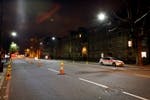This article was published in the June 2011 issue of LEDs Magazine. View the Table of Contents and download the PDF file of the complete June 2011 issue.
+++++
Innovation scholars like the late Everett Rogers teach us that acceptance of a new technology occurs when the potential adopter goes through a series of incremental steps that lead to the adopter’s eventual persuasion. The process reaches a decisive stage when potential users see that a new technology offers superior performance compared with one they have used for some time, enough to outweigh any risks or additional costs that might be associated with something new.
It’s no surprise, then, that potential adopters usually undertake field trials to test new products before they make up their minds. Once they have convinced themselves, early adopters also must decisively prove to their superiors that a change in technology or practice will benefit their organization as a whole. If it’s not broke, why fix it?
In 13 mostly large cities located in seven countries – ranging from London, UK and New York, US to Tianjin, China and Kolkata, India – municipal lighting asset managers are putting market transformation theory into practice. Under the guidance of The Climate Group’s global LED program and with the sponsorship of HSBC bank, the LightSavers consortium of cities is engaged in an unprecedented coordinated global trial of LED street-lighting and parking area/garage products.
Three LightSavers cities have accumulated up to 6,500 hours each of operational experience and are now reaching the decisive acceptance stage.
New York City
The US DOE Gateway program has also taken its own measurements at each site. They are testing luminaires from the FDR Drive trial in a laboratory to quantify possible lumen depreciation due to dirt on the luminaires. Final reports from both the DOT and DOE data-gathering efforts should be released in summer 2011.
Interim results are very encouraging. They show that among the nine LED products tested, several have exhibited excellent performance over the past year, matching or approaching the illuminance of the baseline while delivering significant energy savings, very good lumen maintenance, and negligible color (CCT) degradation.
The DOT is sold! Staff is readying a tender to replace all 1,600 heritage lamps in Central Park. The department has received a grant for this purpose, so financing won’t be necessary. Meanwhile, various options for upgrading the City’s 25,000 arterial street lights with LED luminaires are being explored.
Toronto, Canada
The Toronto Atmospheric Fund (TAF) has been working with another City of Toronto agency, the Toronto Community Housing Corporation, to test a LED luminaire product in two housing-residence garages. T8 lamps were tested alongside the LED products. Both products incorporated adaptive controls that increase light output when there is movement nearby, allowing the baseline light output to be set below previous practice.
The products have operated 24/7 over 6,500 hours and nine months – the longest operational time among the LightSavers trials to date. Performance has been convincing, e.g. energy savings of 70%, excellent lumen maintenance over the period, and strong public acceptance. Tellingly, social-housing residents reported in surveys that they thought the LED and T8 lighting provided higher light levels than the baseline HPS fixtures, despite a designed reduction in illuminance levels of 20-30%. Residents liked the adaptive controls as well – illumination increases when residents enter and move about the garage, improving safety.
TAF and its partners are now conducting further engineering and financial studies to replace the existing lighting in 30 garages using about 3,000 luminaires. TAF is also creating a procurement consortium with local hospitals and other public agencies, to jointly tender LED products to further reduce prices.
Sydney, Australia
Even before the City of Sydney joined the LightSavers consortium, city staff had already mounted four trials testing a variety of LED street-lighting products. A second phase of trials integrating smart controls, organized with the help of The Climate Group, began in 2010. This set of trials uses the LightSavers monitoring protocol, which facilitates performance comparisons with other cities’ trial results. In this second phase, the city also commissioned a public opinion survey of the LED lights under trial.
As a result of compelling performance results emerging from the trials, the city of Sydney’s staff and local elected officials have become sold on LED technology, and are now looking to replace all of the 8,559 street and park lights under their operation. The overwhelmingly positive results of the public opinion survey were instrumental in convincing elected councilors to take the plunge.
The city’s tender seeks replacement of conventional lights with LED technology over three years. Winning bidders will be expected to deliver the city a minimum saving of 40% and greenhouse-gas reductions. Meanwhile, city officials are exploring various financing options.
Summary
Well-conceived, rigorous LED trials are proving decisive in three LightSavers cities as product evaluations indicate the new technology performs well, meeting or exceeding the expectations of potential adopters. Public acceptance, as measured by surveys and opinion polls, has also built political support in two cities, thus contributing to the acceptance of LED technology by lighting asset managers.
The higher capital cost of LEDs, however, remains a significant barrier. Apart from NYC’s Central Park scale-up, which is financially subsidized, the three remaining cities still need to identify pragmatic financial solutions that will capitalize on the lower operating and maintenance costs of LED technology over the lifetime of a replacement program.







